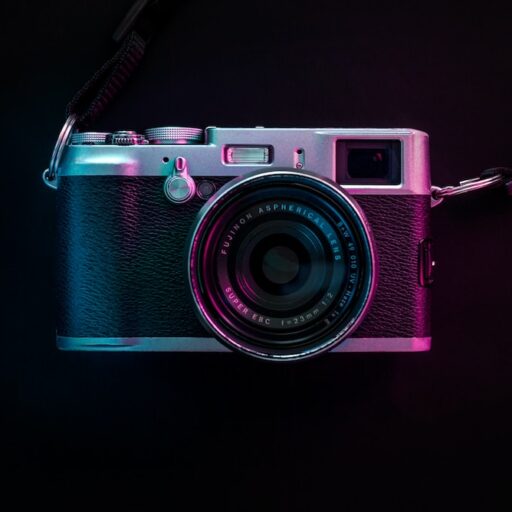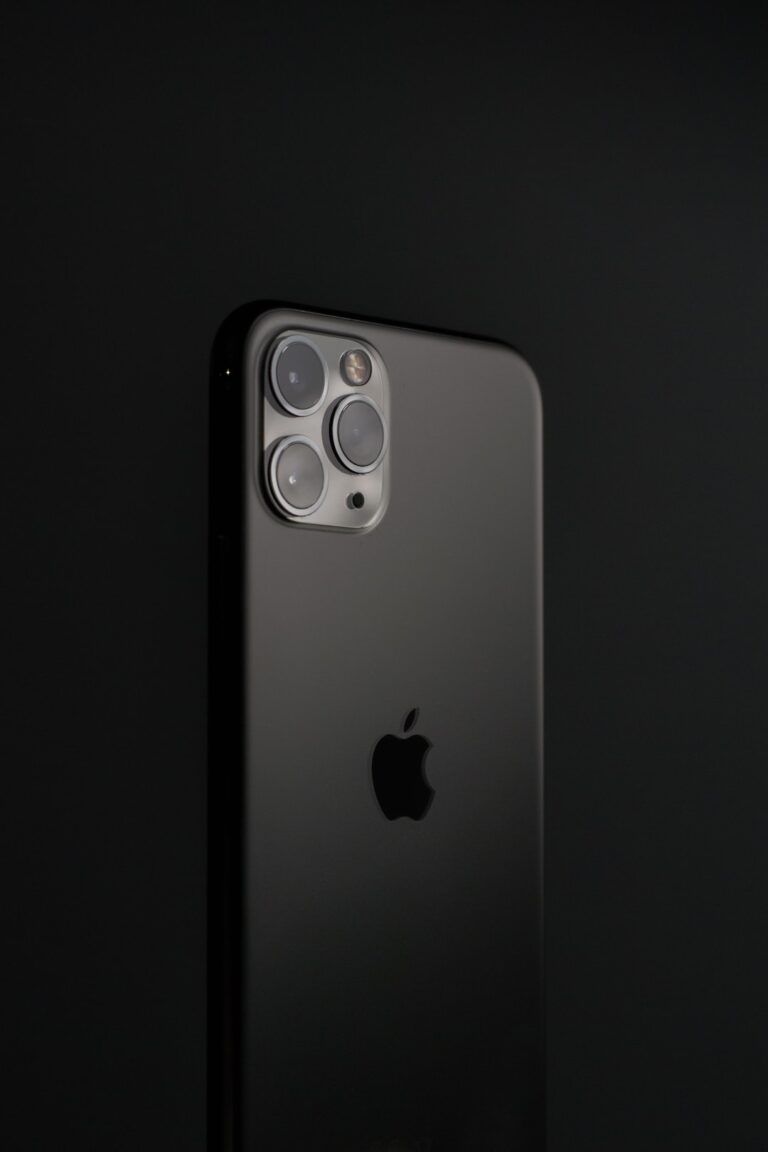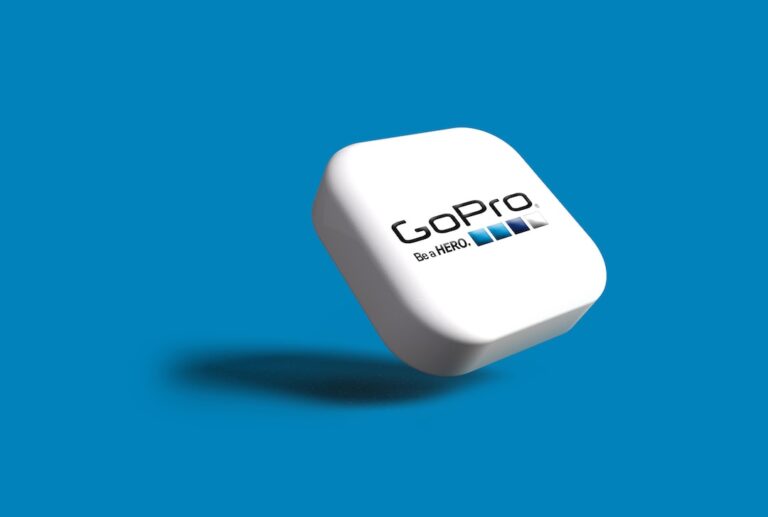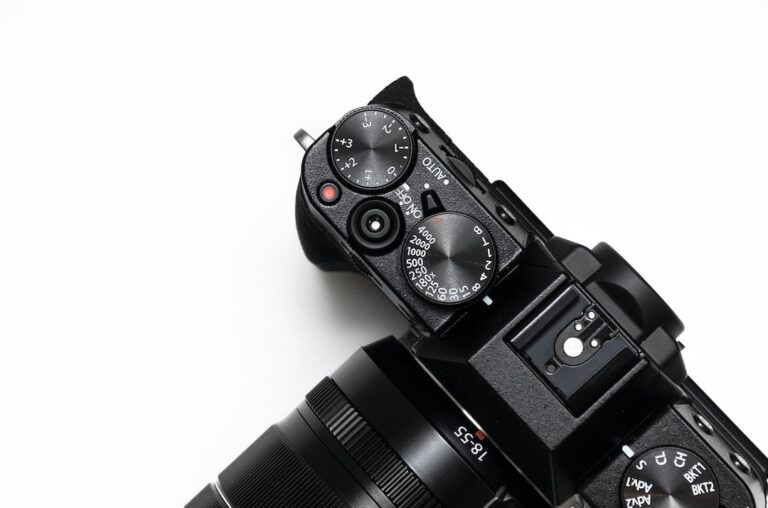Support our educational content for free when you purchase through links on our site. Learn more
Is 4K the Best Camera Quality? 🤔 (2025)
Remember that time I tried to capture my nephew’s first steps on my old 1080p camera? The resulting video was… blurry, to say the least. The detail was simply lost, and the memory was less than perfect. That’s why the question of whether 4K is the “best” camera quality is so important. This comprehensive guide dives deep into the world of 4K video, exploring its evolution, applications, and the factors that truly determine image quality. We’ll compare 4K to other resolutions, examine the impact of sensor size, and even debunk some common myths. By the end, you’ll not only understand if 4K is right for you, but you’ll also be equipped to choose the perfect 4K camera to capture your own unforgettable moments. We’ll even reveal our top 10 picks for 2025!
Key Takeaways
- 4K resolution (3840 x 2160 pixels) offers significantly more detail than 1080p, resulting in sharper, clearer images and videos. However, it’s not just about the resolution.
- Image quality depends on several factors beyond resolution, including sensor size, lens quality, lighting, and image processing. A larger sensor generally leads to better low-light performance and dynamic range.
- 8K offers even greater detail, but it’s currently overkill for most users due to the high cost of equipment and large file sizes. 4K strikes a better balance between quality and practicality.
- The “best” 4K camera depends on your individual needs and budget. Consider factors like sensor size, lens mount, autofocus system, video features, and ergonomics.
👉 Shop Top-Rated 4K Cameras:
- Full-Frame Cameras: Amazon | B&H Photo Video
- Mirrorless Cameras: Amazon | Adorama
- Action Cameras: Amazon | GoPro Official Website
- Vlogging Cameras: Amazon | Sony Official Website
Table of Contents
The Evolution of 4K Video Resolution: A Deep Dive
Understanding 4K Resolution: Pixels, Aspect Ratios, and More
Beyond Megapixels: Factors Affecting 4K Image Quality
Top 10 4K Cameras Across Different Categories in 2025
4K Video: Applications and Use Cases
4K vs. Other Resolutions: 8K, 1080p, and More
Choosing the Right 4K Camera for Your Needs
Camera Sensor Size and Its Impact on 4K Footage
Mastering 4K Video: Tips, Tricks, and Techniques
The Future of 4K and Beyond: What to Expect
Is 4K the Ultimate Resolution? Debunking the Myths
⚡️ Quick Tips and Facts
- 4K isn’t just about resolution: While 4K (3840 x 2160 pixels) offers significantly more detail than 1080p, the overall image quality depends on factors like sensor size, lens quality, and processing capabilities. Think of it like this: a high-resolution canvas doesn’t automatically make a masterpiece; the artist’s skill matters too!
- Bigger isn’t always better: 8K is the next step up, but it’s currently overkill for most users. The file sizes are enormous, requiring powerful hardware and significant storage. Unless you’re a professional filmmaker with specific needs, 4K strikes a great balance between quality and practicality. Learn more about 8K vs. 4K
- Sensor size is key: A larger sensor captures more light, resulting in better low-light performance and a shallower depth of field (that pleasing blurry background effect). Check out our guide on camera sensors.
- Frame rate matters: Higher frame rates (like 60fps or even 120fps) create smoother, more realistic motion, especially important for action scenes or sports. Explore different frame rates and their impact.
- Good lighting is your best friend: No matter the resolution, poor lighting will ruin your footage. Invest in good lighting equipment or shoot in well-lit environments.
The Evolution of 4K Video Resolution: A Deep Dive
The journey to 4K hasn’t been a sprint; it’s been a marathon of technological advancements! Early video resolutions were incredibly low, with standard definition (SD) offering a paltry 720 x 480 pixels. The leap to high definition (HD) with 1080p (1920 x 1080 pixels) was a significant improvement, but 4K marked a quantum leap, quadrupling the pixel count. This increase in resolution dramatically improved image clarity and detail, opening up new possibilities for filmmakers and content creators.
The adoption of 4K wasn’t immediate. Initially, the cost of 4K displays and cameras was prohibitive. However, as technology advanced and economies of scale kicked in, the price dropped, making 4K more accessible to consumers. Now, 4K is becoming the standard for many applications, from televisions to smartphones. But the story doesn’t end there; 8K is on the horizon, promising even greater detail. Will it become the new standard? Only time will tell!
Understanding 4K Resolution: Pixels, Aspect Ratios, and More
Let’s get technical for a moment! 4K resolution refers to a horizontal resolution of approximately 4000 pixels. The most common 4K standard is 3840 x 2160 pixels, often referred to as Ultra HD (UHD). This means the image contains over 8 million pixels, resulting in incredibly sharp and detailed images.
But resolution isn’t the whole story. Aspect ratio also plays a crucial role. The most common aspect ratio for 4K is 16:9, the same as 1080p. However, other aspect ratios exist, such as 21:9 for widescreen cinematic experiences. Understanding these aspects is crucial for choosing the right camera and display for your needs. Check out our detailed comparison of aspect ratios.
Beyond Megapixels: Factors Affecting 4K Image Quality
While megapixels (the number of pixels) contribute to resolution, they aren’t the only factor determining image quality. Think of it like this: a high-resolution photo printed on cheap paper will still look dull. Several other factors influence the final result:
- Sensor Size: Larger sensors capture more light, leading to better low-light performance, dynamic range (the difference between the darkest and brightest parts of an image), and shallower depth of field.
- Lens Quality: A high-quality lens will render sharper images with less distortion and better color accuracy. A cheap lens can limit the potential of even the best sensor.
- Image Processing: The camera’s image processor plays a crucial role in noise reduction, sharpening, and color reproduction. A powerful processor can significantly improve image quality.
- Dynamic Range: This refers to the range of tones a camera can capture, from the deepest shadows to the brightest highlights. A high dynamic range results in more detail in both bright and dark areas.
- Color Science: Different cameras have different color profiles, affecting the overall look and feel of the images. Some cameras offer more flexibility in adjusting color settings.
Top 10 4K Cameras Across Different Categories in 2025
We’ve scoured the market and considered user feedback to compile this list of top 4K cameras across various categories. Remember, the “best” camera depends entirely on your individual needs and budget!
| Camera | Category | Sensor Size | Key Features | Strengths | Weaknesses |
|---|---|---|---|---|---|
| Panasonic Lumix GH6 | Hybrid Video/Photo | Micro Four Thirds | Excellent video capabilities, versatile features, compact size | Superb image stabilization, excellent autofocus, professional video features | Relatively small sensor compared to full-frame |
| Sony a7S III | Full-Frame Video | Full-Frame | Exceptional low-light performance, high dynamic range, 4K 120fps recording | Amazing low-light performance, stunning image quality, robust build quality | Pricey, limited autofocus features compared to some competitors |
| Canon EOS R5 | Full-Frame Hybrid | Full-Frame | High-resolution stills and video, 8K video recording (cropped), excellent autofocus | Outstanding image quality, versatile features, robust build quality | 8K video recording is cropped, high price |
| Blackmagic Pocket Cinema 6K | Cinema Camera | Super 35 | High-quality video recording, professional features, compact size | Exceptional image quality, wide dynamic range, professional features | Limited autofocus capabilities, no built-in image stabilization |
| Fujifilm X-H2 | Hybrid Video/Photo | APS-C | Excellent image quality, film simulations, fast autofocus | Beautiful image quality, excellent autofocus, compact size | Pricey for an APS-C camera |
| DJI Osmo Action 3 | Action Camera | 1/1.7″ | Rugged design, excellent image stabilization, versatile features | Excellent image stabilization, compact size, waterproof design | Limited manual controls |
| GoPro HERO11 Black | Action Camera | 1/2.3″ | Compact size, rugged design, excellent image stabilization, HyperSmooth 5.0 | Excellent image stabilization, compact size, waterproof design | Limited manual controls |
| Sony ZV-1 | Vlogging Camera | 1″ | Compact size, excellent autofocus, clear audio recording, flip-out screen | Compact and easy to use, excellent autofocus, great for vlogging | Limited manual controls, small sensor |
| Canon EOS M50 Mark II | Entry-Level Hybrid | APS-C | Affordable price, good image quality, 4K video recording | Affordable, good image quality, easy to use | Limited features compared to higher-end models |
| Nikon Z50 | Entry-Level Hybrid | APS-C | Affordable price, good image quality, 4K video recording | Affordable, good image quality, easy to use | Limited features compared to higher-end models |
Note: Specifications and features are subject to change. Always check the manufacturer’s website for the latest information.
4K Video: Applications and Use Cases
The versatility of 4K video is astounding! It’s used across a wide range of applications:
- Filmmaking: 4K provides the detail and clarity needed for cinematic productions.
- Television Broadcasting: Many television channels now broadcast in 4K, offering viewers a superior viewing experience.
- Video Games: 4K gaming provides stunning visuals, enhancing the immersive experience.
- Corporate Videos: Businesses use 4K to create high-quality marketing materials and training videos.
- Surveillance: 4K security cameras offer superior image quality for monitoring and security purposes.
- Vlogging: 4K allows vloggers to create high-quality videos for their audiences.
- Photography: Some cameras offer high-resolution stills from 4K video footage.
4K vs. Other Resolutions: 8K, 1080p, and More
Let’s compare 4K to other resolutions:
- 1080p (Full HD): While still widely used, 1080p lacks the detail and clarity of 4K. The difference is noticeable, especially on larger screens.
- 8K (Ultra HD): 8K offers even greater detail than 4K, but it’s currently a niche technology due to the high cost of equipment and the large file sizes.
- Other Resolutions: Various other resolutions exist, but 4K remains a sweet spot between quality and practicality for most users.
Choosing the Right 4K Camera for Your Needs
Choosing the right 4K camera depends on your specific needs and budget. Consider these factors:
- Sensor Size: Larger sensors generally provide better image quality, but they are often more expensive.
- Lens Mount: Choose a camera with a lens mount that offers a wide selection of lenses.
- Autofocus System: A reliable autofocus system is crucial for both stills and video.
- Video Features: Consider features like frame rate, bit rate, and color science.
- Ergonomics: The camera should be comfortable to hold and use.
- Budget: Set a realistic budget before you start shopping.
Camera Sensor Size and Its Impact on 4K Footage
The sensor size significantly impacts 4K footage quality. Larger sensors (like full-frame) gather more light, resulting in:
- Improved Low-Light Performance: Less noise and better detail in low-light conditions.
- Better Dynamic Range: More detail in both highlights and shadows.
- Shallower Depth of Field: That beautiful blurry background effect.
Smaller sensors (like those in many smartphones) struggle in low light and have a shallower depth of field. Learn more about sensor size and its impact.
Mastering 4K Video: Tips, Tricks, and Techniques
Here are some tips to help you master 4K video:
- Use Good Lighting: Proper lighting is essential for high-quality video.
- Stabilize Your Camera: Use a tripod or gimbal to avoid shaky footage.
- Focus Carefully: Ensure your subject is in sharp focus.
- Monitor Your Audio: Good audio is just as important as good video.
- Edit Your Footage: Post-production editing can significantly improve the final result.
- Experiment with Settings: Don’t be afraid to experiment with different camera settings to find what works best for you.
The Future of 4K and Beyond: What to Expect
4K is here to stay, but the technology continues to evolve. We can expect:
- More Affordable 4K Cameras: The price of 4K cameras will continue to drop, making them more accessible to consumers.
- Improved Image Processing: Advances in image processing will lead to even better image quality.
- Higher Frame Rates: We’ll see more cameras offering higher frame rates, such as 120fps and beyond.
- Wider Adoption of HDR: High Dynamic Range (HDR) will become more prevalent, offering a wider range of colors and tones.
- The Rise of 8K: While currently niche, 8K will likely become more mainstream in the future.
Is 4K the Ultimate Resolution? Debunking the Myths
While 4K offers incredible detail, it’s not the ultimate resolution. The human eye can’t always perceive the difference between 4K and 8K, especially on smaller screens. However, 4K provides a significant improvement over 1080p and remains a great balance between quality and practicality for most users. The “ultimate” resolution is a moving target, constantly evolving with technological advancements.
Conclusion
So, is 4K the best camera quality? The short answer is: it depends. While 4K offers a significant jump in detail and clarity compared to 1080p, the overall image quality hinges on several factors beyond just resolution. Sensor size, lens quality, lighting, and post-processing all play crucial roles. 8K offers even more detail, but it comes with a hefty price tag and significant storage requirements, making it overkill for most users. For the vast majority, 4K provides an excellent balance between image quality, practicality, and affordability. We’ve explored the evolution of 4K, its applications, and the various factors influencing its performance. We’ve also looked at several top-performing cameras across different categories, highlighting their strengths and weaknesses. Ultimately, the best 4K camera for you will depend on your specific needs, budget, and shooting style. We hope this comprehensive guide has equipped you with the knowledge to make an informed decision! Remember, the journey to capturing stunning visuals is a continuous learning process, so keep experimenting and exploring!
Recommended Links
👉 Shop Cameras on:
- Panasonic Lumix GH6: Amazon | B&H Photo Video | Panasonic Official Website
- Sony a7S III: Amazon | Adorama | Sony Official Website
- Canon EOS R5: Amazon | Canon Official Website
- Blackmagic Pocket Cinema 6K: Amazon | B&H Photo Video | Blackmagic Design Official Website
- Fujifilm X-H2: Amazon | Adorama | Fujifilm Official Website
- DJI Osmo Action 3: Amazon | DJI Official Website
- GoPro HERO11 Black: Amazon | GoPro Official Website
- Sony ZV-1: Amazon | Sony Official Website
- Canon EOS M50 Mark II: Amazon | Canon Official Website
- Nikon Z50: Amazon | Nikon Official Website
Recommended Books on Amazon:
- Mastering 4K Video Production
- The 4K Revolution: How Ultra HD is Changing the Way We Watch Television
FAQ
What are the benefits of using a 4K camera for videography and photography?
4K cameras offer significantly improved image quality compared to lower resolutions. The higher resolution allows for greater detail, sharper images, and the ability to crop and zoom without significant loss of quality. In photography, 4K video can also be used to extract high-resolution still images.
How does 4K camera quality compare to other resolutions such as 1080p and 8K?
1080p is noticeably less detailed than 4K, especially on larger screens. 8K offers even greater detail than 4K, but it requires significantly more processing power and storage. 4K represents a sweet spot between image quality and practicality for most users.
What are the system requirements for editing and viewing 4K camera footage?
Editing and viewing 4K footage requires a powerful computer with a fast processor, ample RAM, and a dedicated graphics card. Storage space is also a significant consideration, as 4K files are large. Check out our guide on system requirements for 4K editing.
Do all 4K cameras produce the same level of image quality, or are there variations between brands?
No, not all 4K cameras produce the same image quality. Variations exist due to differences in sensor size, lens quality, image processing capabilities, and overall design. Higher-end cameras generally offer superior image quality, but they also come with a higher price tag.
What are the factors to consider when choosing a 4K camera besides resolution?
Beyond resolution, consider sensor size (larger is generally better), lens quality (affects sharpness and distortion), dynamic range (the range of tones a camera can capture), low-light performance, autofocus system, video features (frame rate, bit rate, codecs), and ergonomics (how comfortable the camera is to use).
What are the common file formats used for 4K video, and how do they affect file size and quality?
Common 4K video file formats include MP4 (H.264 or H.265), MOV (ProRes, DNxHD), and RAW. RAW files offer the highest quality but are significantly larger than compressed formats like H.265. The choice depends on your workflow and storage capacity.
Reference Links
- Panasonic Lumix GH6
- Sony a7S III
- Canon EOS R5
- Blackmagic Pocket Cinema 6K
- Fujifilm X-H2
- DJI Osmo Action 3
- GoPro HERO11 Black
- Sony ZV-1
- Canon EOS M50 Mark II
- Nikon Z50
- Best 4K Home Security Cameras of 2025






